Interested in exploring some of Rome’s magnificent palace museums? These opulent residences bear witness to the city’s rich history. And they are chock full of artistic treasures.
Most people associate Rome with its iconic Roman ruins. And they’re incredibly historic and should be on your Rome itinerary.
But where Rome really excels is with its elegant private palazzos. Most of these lovelies are hidden gems in Rome, a city that’s often crowded jowl to jowl with tourists.
If you venture off the beaten path, you may have an aristocratic private palace in Rome all to yourself.
These rarely visited Roman palazzos hide some of Rome’s unmissable masterpieces. The art is amid dazzling rooms designed and decorated by Rome’s rich and famous.
These secret palaces offer a refuge from Rome’s crowds and the ability to enjoy Rome’s cultural riches in relative privacy. A true art lover will be utterly delighted by these unique museum experiences in Rome.
Some of these magnificent palazzos were acquired by the government. Others remain in private hands.
I’ve been to Rome many times. And I’ve made a thorough investigation of Rome’s amazing palace museums. I report my findings here.
Guide To The Best Palace Museums in Rome
Let’s take a tour and peak inside Rome’s opulent hidden palazzos.
1. Palazzo Doria Pamphilj: Baroque Masterpieces
I’m starting off with my personal favorite, the Palazzo Doria Pamphilj, which provides a near overdose art high.
The museums holds a princely collection of 17th century works, one of the most impressive private collections in Europe. The museum is a Rome hidden gem housed in a lavish Roman-Rococo palace. Every inch of the walls and ceilings are decorated with beautiful frescos, tapestries, and glittering chandeliers.
The art collection was meticulously assembled and is still owned by a powerful Italian family, the Doria Pamphilj (pronounced Pom-fee-lee).
The museum boasts over 700 works spanning the 15th to the 18th century. There are rare master works by Bernini, Caravaggio, Velazquez, Titian, Carracci, and Bruegel.
READ: Guide to Free Art in Rome
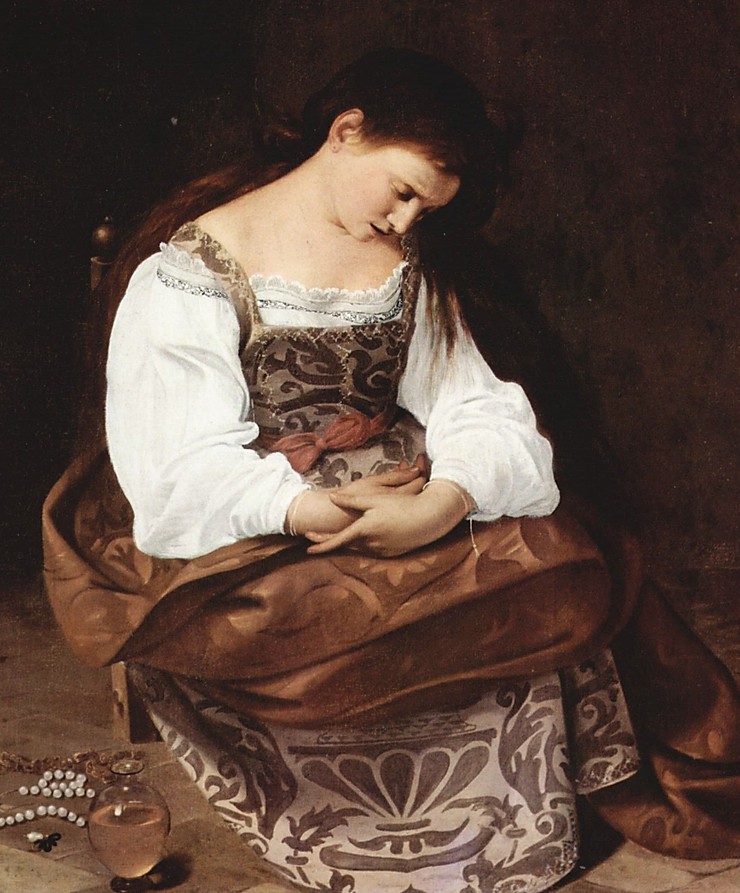
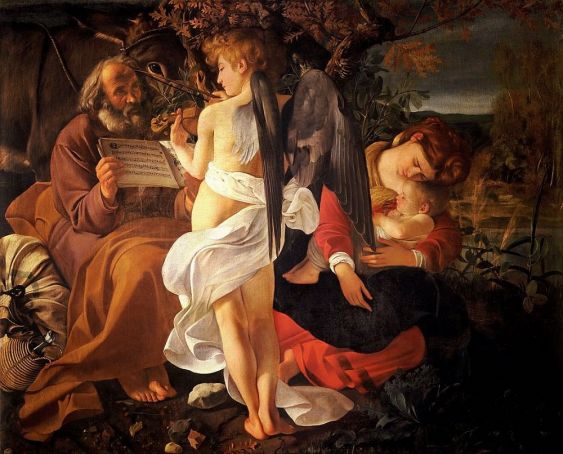
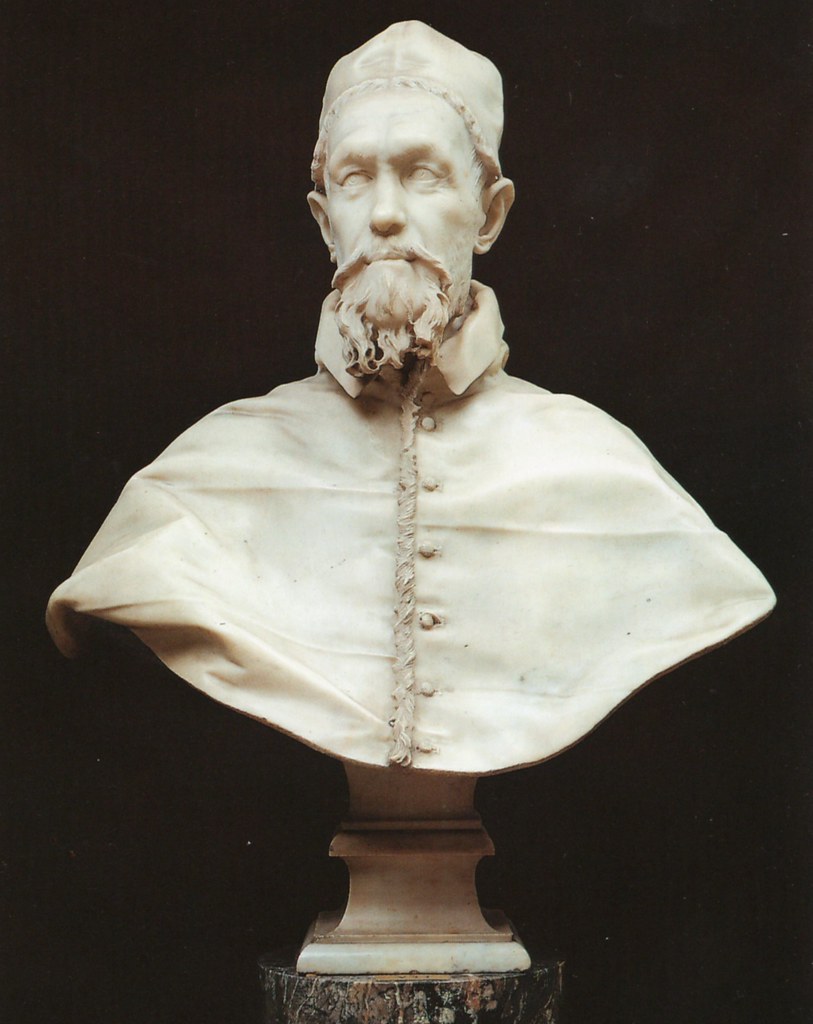
The Doria Pamphilj’s most famous painting is Velazquez’s Portrait of Pope Innocent X. He’s portrayed as a stern intimidating figure. The paintings is housed in its own room behind glass.
The portrait was so individualized that the pope remarked “It is too true!” Nearby is Bernini’s marble bust of the same pope.
Of note are two rare Caravaggio paintings, the Penitent Magdelene and the beautiful The Rest on the Flight Into Egypt. They’re on display in the splendid Aldobrandini Room. A Doria Pamphilj prince narrates the audio guide with amusing historical detail and insight.
Click here to book an entrance ticket for the palace. You can also book a private tour of the palace.
Address: Via del Corso, 305
2. Villa Farnesina: Secret Raphael Frescos
Designed by artist-architect Baldasarre Perruzi, Villa Farnesina is a magnificent off the beaten path museum, located in Rome’s lovely Trastevere neighborhood. It’s home to torrid love stories and secret Raphael paintings.
Between 1506-11, the wealthy banker Agostino Chigi from the beautiful medieval town of Siena built Villa Farnesina, then titled Villa Chigi.
Chigi wanted a show-offy party pad to entertain Roman VIPs. He created a beautiful space, a Roman pleasure garden that was bright, airy, and infused with Renaissance beauty.
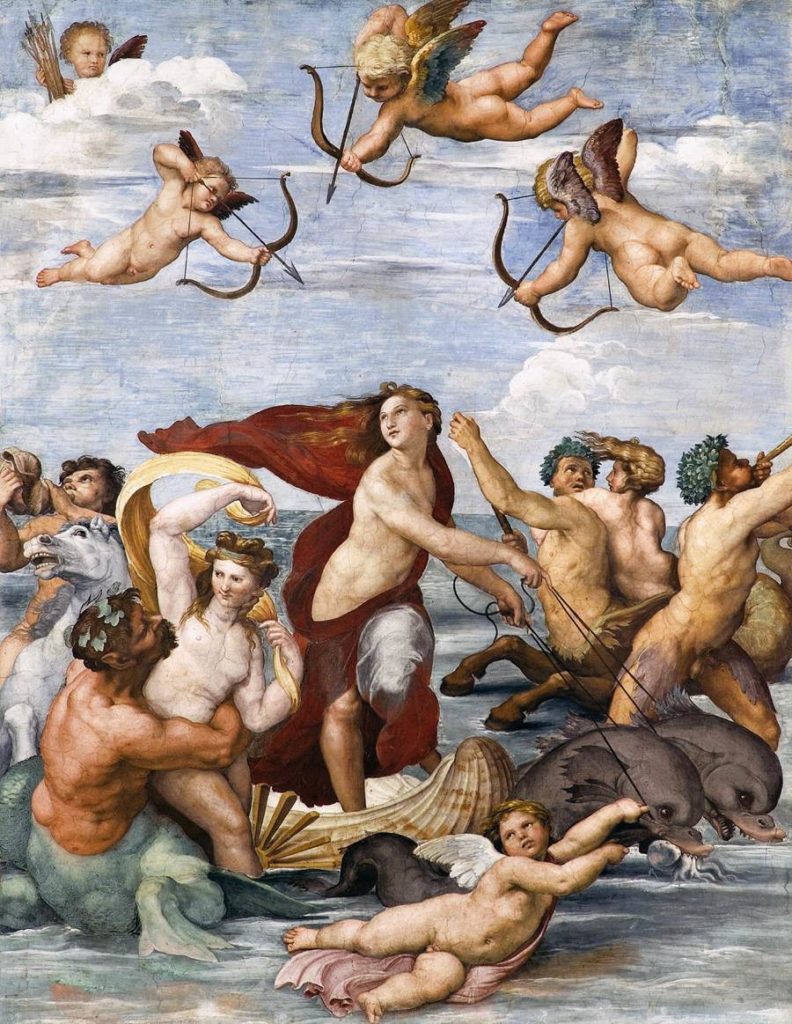
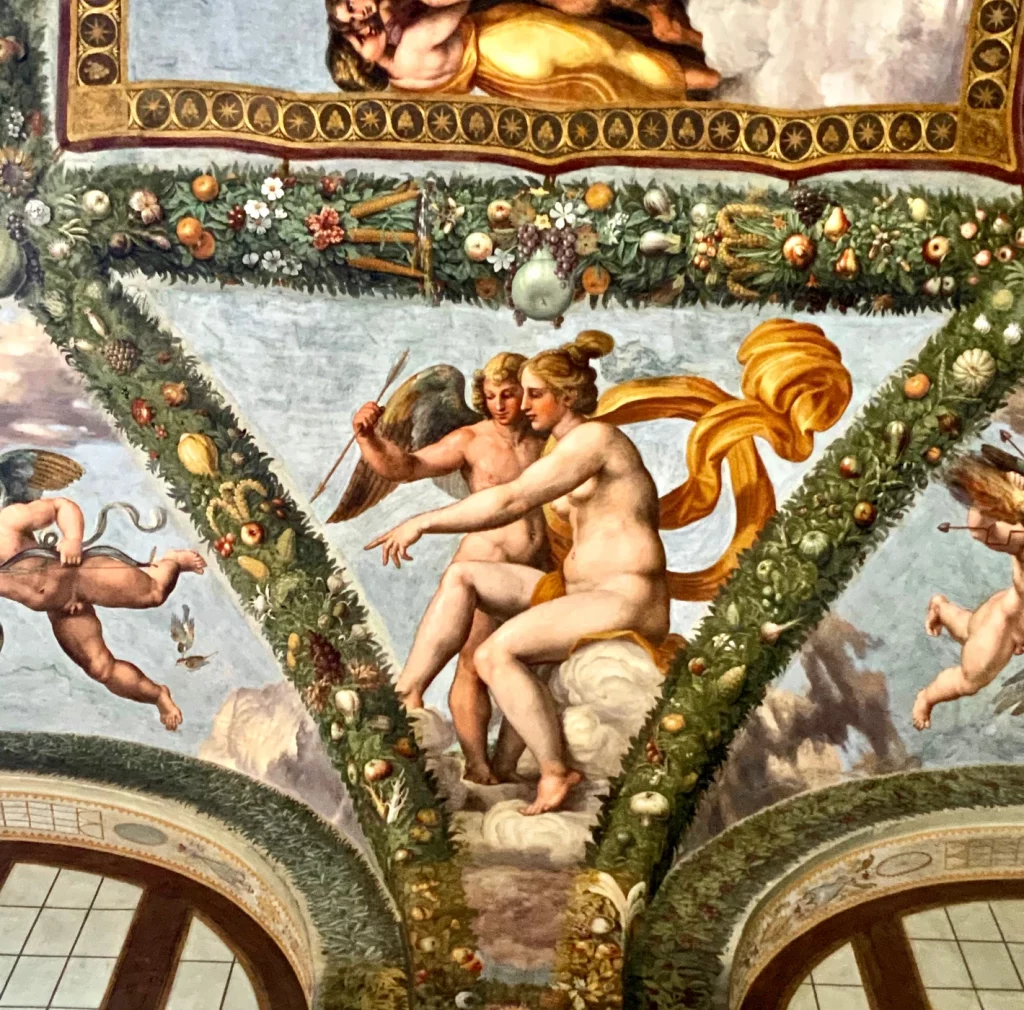
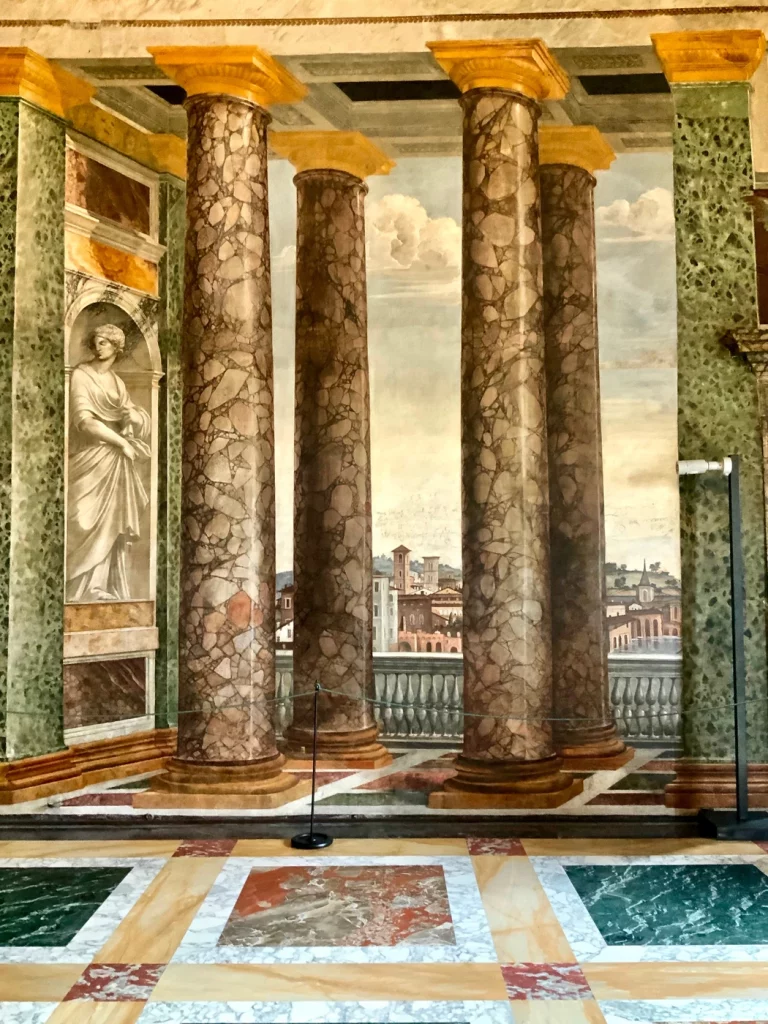
The villa is decorated with racy mythological frescos by Renaissance painters Raphael, Peruzzi, and Sebastian del Piombo. Check out the Loggia of Cupid and Psyche, the Hall of Galatea, and the Room of the Perspectives.
The highlight is the Loggia of Cupid and Psyche. It’s painted by Raphael and his workshop. The beautiful and animated frescos will take your breath away.
Cavorting gods and goddesses cover every inch of the walls. The theme is “love conquers all.” In the next room, the Hall of Galatea, you’ll find Raphael’s famous Triumph of Galatea.
If you want more information on this delightful Roman villa, here’s my complete guide to visiting the Villa Farnesina. Click here for a guided tour of the lovely villa. Click here for a guided walking tour of the villa and the Trastevere neighborhood.
Address: Via della Lungara, 230
3. Palazzo Spada: Borromini Perspective Gallery
Palazzo Spada is a Renaissance palace named after Cardinal Bernardino Spada. The cardinal purchased the palace in 1632. He hired famed architect Francesco Borromini to transform the building to beautiful effect.
There are three reasons to put the Palazzo Spada on your itinerary for Rome — the beautiful palace itself, the Borromini Perspective Gallery, and the precious collection of Artemisia Gentileschi and other Baroque paintings in the Galleria Spada.
The Borromini Gallery is a tromp l’ceil colonnade. Cardinal Spada was fascinated with perspective tricks that evoked unlimited and unreal spaces.
He wanted his small garden space to seem larger. In 1652, he hired Borromini to create his very own optical illusion, an architectural folly of sorts.
The long corridor of columns isn’t what it appears. It seems endless. It’s meant to appear 60 feet long. But it’s a trick of scale.
The corridor is really only 28 feet in length. A towering sculpture is visible at the end. It looks life size, but it’s only 23 inches high.
Address: Piazza Capo di Ferro, 13
Here’s my complete guide to Palazzo Spada. Click here to pre-book a ticket.
4. Palazzo Colonna: Hall of Mirrors & Princess Apartments
Palazzo Colonna is in the heart of Rome right near Piazza Venezia, opposite the Colosseum. You leave the hurly burly of central Rome and disappear into a quiet sanctuary of Renaissance-Baroque splendor.
Built beginning in the 13th century, the Colonna family let the money flow. The resulting effect is a beautiful and lavish assemblage of Medieval, Renaissance, Baroque, and Roman Rococo art and architecture.
To top it off, it’s done in unfailing good taste. The palace is also beautiful preserved, with the family’s personal objects still in place.
Aside from all the gilding, this Baroque jewel has many wonders to explore — a terrific art collection, stunning frescoed ceilings and walls, the private apartments of Princess Isabelle, and the Pio Pavilion.
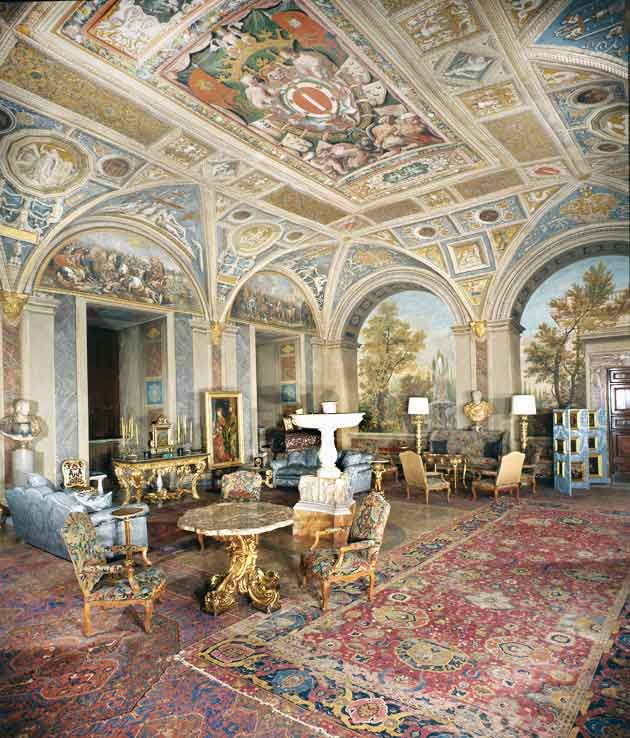
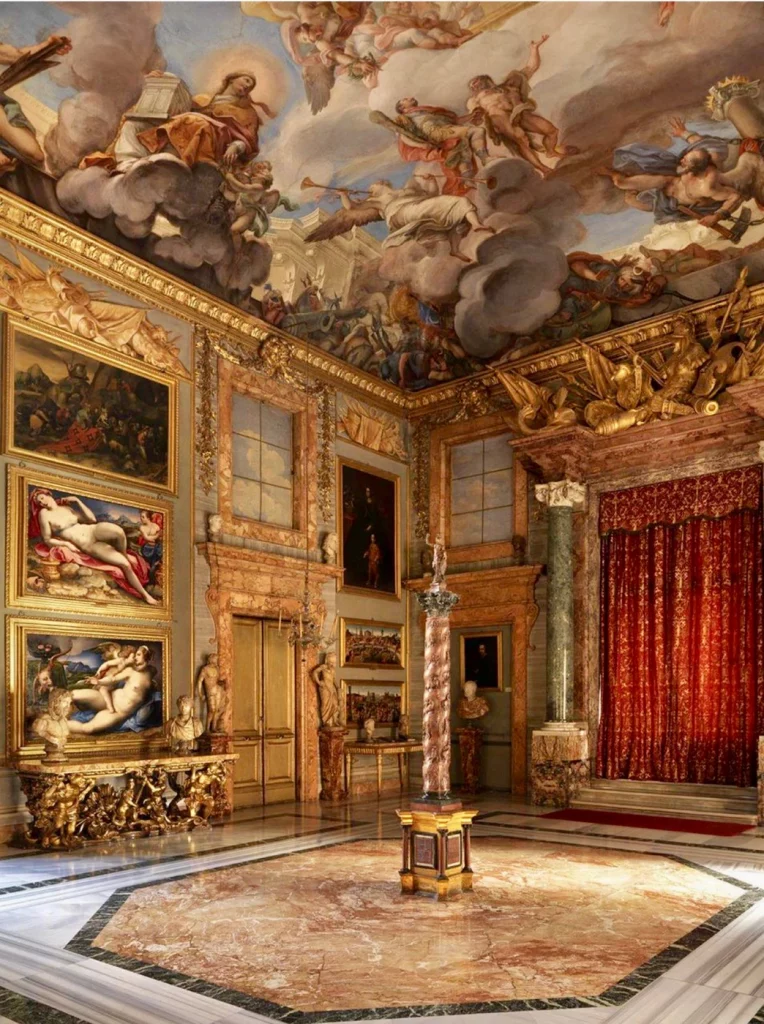
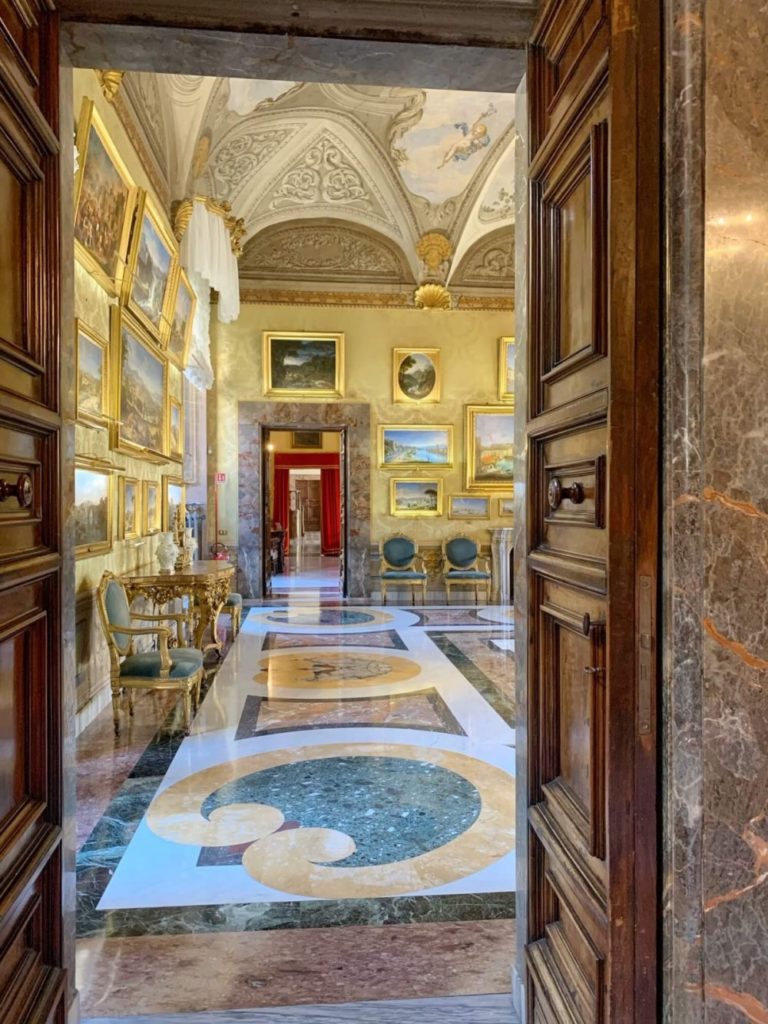
The palace rooms boast multi-colored marble floors, authentic period furniture, lavish tapestries, and intricate crystal chandeliers. The walls of the entire residence are covered with Old Master artworks by Pinturicchio, Carracci, Guido Reni, Tintoretto, Bronzino, Guercino, Veronese, Vanvitelli, and many others.
While there are many rooms, the four main highlights of the Colonna Gallery are: The Great Hall, The Blue Room, The Hall of the Battle Column, and The Hall of the Landscapes.
The most magnificent room is the Great Hall. It’s a Versailles-like gem, akin to the famous Hall of Mirrors but even longer. It stuns with sculptures, painted mirrors, and 270 paintings set in golden frames. The ceiling fresco depicts The Battle of Leptano.
Here’s my complete guide to Palazzo Colonna. Click here to pre-book an entrance ticket.
Address: Piazza dei Santi Apostoli, 66, right near Trajan’s Column
5. Palazzo Farnese: Carracci Ceiling Frescos
Tucked behind the Campo dei’Fiori is the elegant Palazzo Farnese. It was once the most important High Renaissance villa in Rome, known as Rome’s “fourth wonder.”
Construction began in 1513 and took 75 years. Michelangelo designed the imposing and monumental facade. On the uppermost story, there’s an extraordinary cornice with Farnese lilies. Michelangelo said that it proclaimed “the family with clout.”
Used by Puccini as a setting for his opera “Tosca,” the palace has served as the French Embassy since 1874.
Despite that, the beautiful villa is open to the public via strictly controlled guided tours. English tours are at 5:00 pm on Wednesdays.
The magnificent highlight of Palazzo Farnese is Annibale Caracci’s ceiling fresco, The Loves of the Gods. The fresco has been recently restored and practically gleams.
More grandeur awaits you in the Hercules Room. The original Hercules statue is in Naples. But the room itself, two stories high, is still a match for scale.
A majestic fireplace is propped by Giacomo della Porta’s statues. They were meant for Pope Paul’s tomb. Sangallo’s miraculous wooden ceiling, with the family crest, is the proud focus.
Address: Piazza Farnese, 67
6. Palazzo Altemps: Greco-Roman Sculptures
The 15th century Palazzo Altemps is a quiet oasis, away from the cacophony of the nearby Piazza Navona. It’s now part of the National Museum of Rome, and is one of the best museums in Rome not on your Rome bucket list or itinerary.
It’s definitely worth a visit if you admire sculpture. The core of the collection are superb sculptures from the Ludovisi collection.
It was compiled by Ludovico Ludovisi, a nephew of Pope Gregory XV. The palace also has some lovey frescoed rooms, particularly the Sala delle Prospettive Dipinte.
READ: Guide To Rome’s Ancient Art Collections
The Palazzo Altempts isn’t a cluttered museum either. You’re given ample berth to view the sculptures.
The major must see works include Apollo the Lyrist, the Ludovisi Athena, the Ludovisi Throne, the Grande Ludovisi Battle Sarcophagus, the Ludovisi Ares, and (the very bloody) Gallic Soldier and his Wife Committing Suicide.
The Grand Ludovisi Sarcophagus is especially impressive. Just look at the expressions on the Roman solider and the barbarians he’s about to slaughter.
The gory Gallic Soldier piece was discovered in 1621, along with the Dying Gaul masterpiece that’s in Rome’s Capitoline Museums. The sculpture was found during construction of the Villa Ludovisi, which was built on land that once belonged to Julius Caesar.
Click here to book a ticket to Palazzo Altemps.
Address: Piazza di Sant’Apollinare, 46
7. Palazzo Corsini: Rare Caravaggio Painting
Located just opposite Villa Farnesina, Galleria Corsini is part of Rome’s Arte Antica collections, along with the Borghese Gallery and Palazzo Barberini.
The museum is housed in an impressive late-Baroque palace built by the wealthy and prominent Corsini family. The palace has been home to the exiled Queen of Switzerland and the infant Elsa Schiaparelli.
The palazzo’s famed gallery has an impressive collection of Italian art from early Renaissance to the late 18th century. It boasts works by Caravaggio, Fra Angelico, Van Dyke, Rubens, and Reni. The most famous Caravaggio piece is John the Baptist (1604).
The highlight of the museum may be the Biblioteca Corsini, a gorgeous library embellished with columns, trompe l’oeil painted busts, and elaborate ceiling frescoes.
Address: Via della Lungara 10
READ: The Caravaggio Guide to Rome
8. Palazzo Massimo alle Terme: Ancient Roman Frescos
Palazzo Massimo is the best archaeological museum in Rome.
The off the radar museum is one of Rome’s newer museum spaces, one of the five branches of the National Roman Museum. The palazzo was built in the late 19th century by Camillo Pistrucci.
The museum is next to Rome’s unlovely Termini station in the north. But don’t let that put you off.
Once inside, you’re in a magnificently restored building bursting with a wealth of fine sculptures, mosaics, and frescos.
Three galleries on the ground floor are dedicated to busts and statuary from the last years of the Roman Republic. The two most famous statues are the Emperor Augustus and The Boxer at Rest.
The Augustus statue is a beautiful, and incredibly detailed, statue of the Roman emperor. The Boxer was discovered on Quirinal Hill of Rome in 1885, near the ancient Baths of Constantine.
If you want to see these beauties, you can book a guided tour of the museum.
READ: Rome’s Best Ancient Ruins and Archaeological Sites
The museum’s real treat is a series of gorgeous domestic wall paintings in Room II on the second floor.
That room houses the exquisite garden frescos that were restored and removed from the House of Livia on Palatine Hill. Livia was the wife of Emperor Augustus.
Other rooms contain frescos taken from the Villa Farnesina. The other two stand out sculptures are the Sleeping Hermaphrodite and the Discus Thrower, two of the better Roman copies made from Greek originals.
Address: Largo di Villa Peretti, 31
READ: 5 Day Guide to Rome
9. Palazzo Barberini: Stunning Baroque Masterpieces and Architecture
Palazzo Barberini houses one of Rome’s seriously underrated museums, the Galleria Nazionale d’Arte Antica. It’s an art lover’s art gallery.
Recent restorations give it an unapologetically grand wow factor. The museum holds some of Europe’s classic paintings by the great masters.
The Barberini Palace is 12,000 square meters and has 187 rooms. It has beautiful staircases by architects Borromini and Bernini.
The palace is home to one of Raphael’s most famous paintings, La Fornarina. It’s a painting of the “baker’s daughter.” Legend holds that Raphael fell in love with while fresco painting in the Villa Farnesina.
Other master works include Caravaggio’s Narcissus and Judith and Holofernes, Holbein’s Henry VIII, and the magnificent ceiling fresco by Pietro da Cortona.
Cortona’s Triumph of Divine Providence is located in the largest and most important hall of Palazzo Barberini. There’s 400 square meters of decorated fresco.
The elaborate project was commissioned by Pope Urban VIII (Maffeo Barberini) in 1632, and finished by Cortona in 1639. Recliners allow you to lie back and take in the dramatic scene.
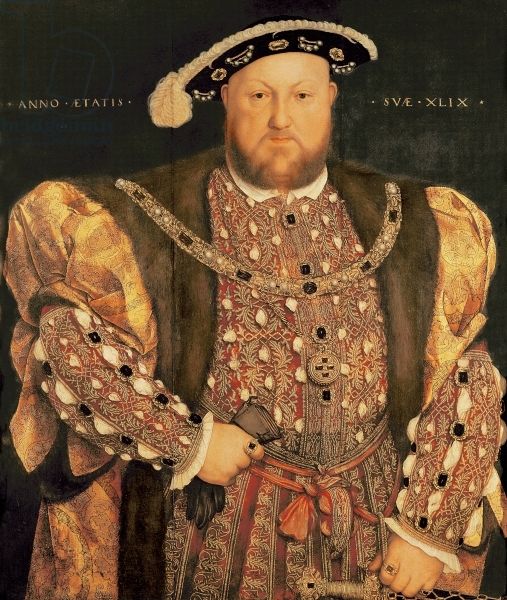
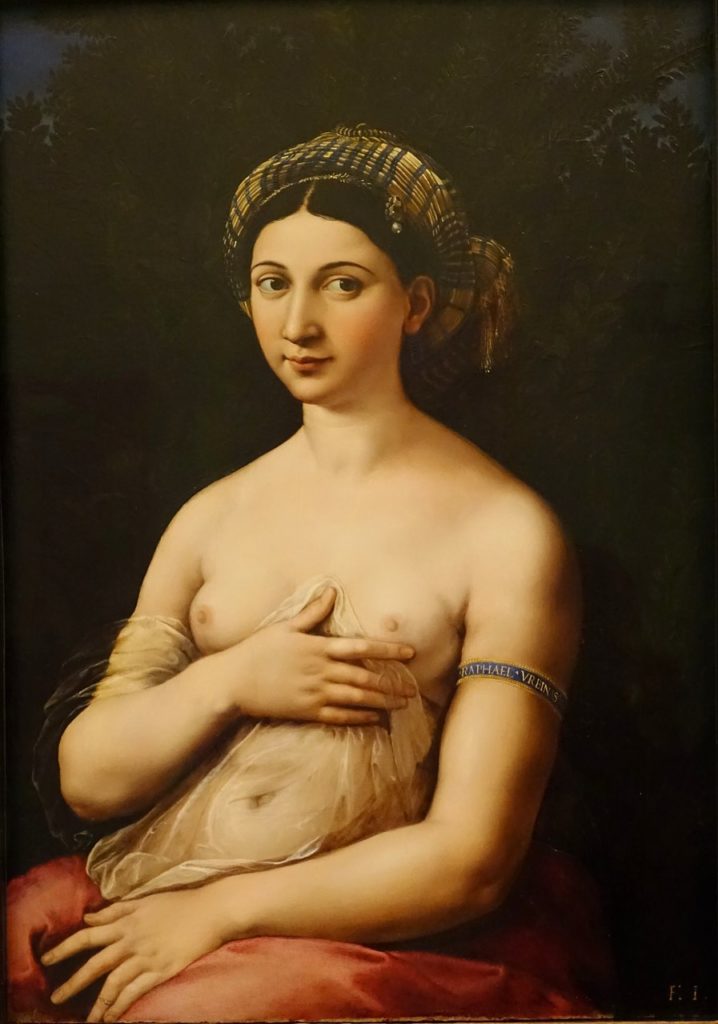
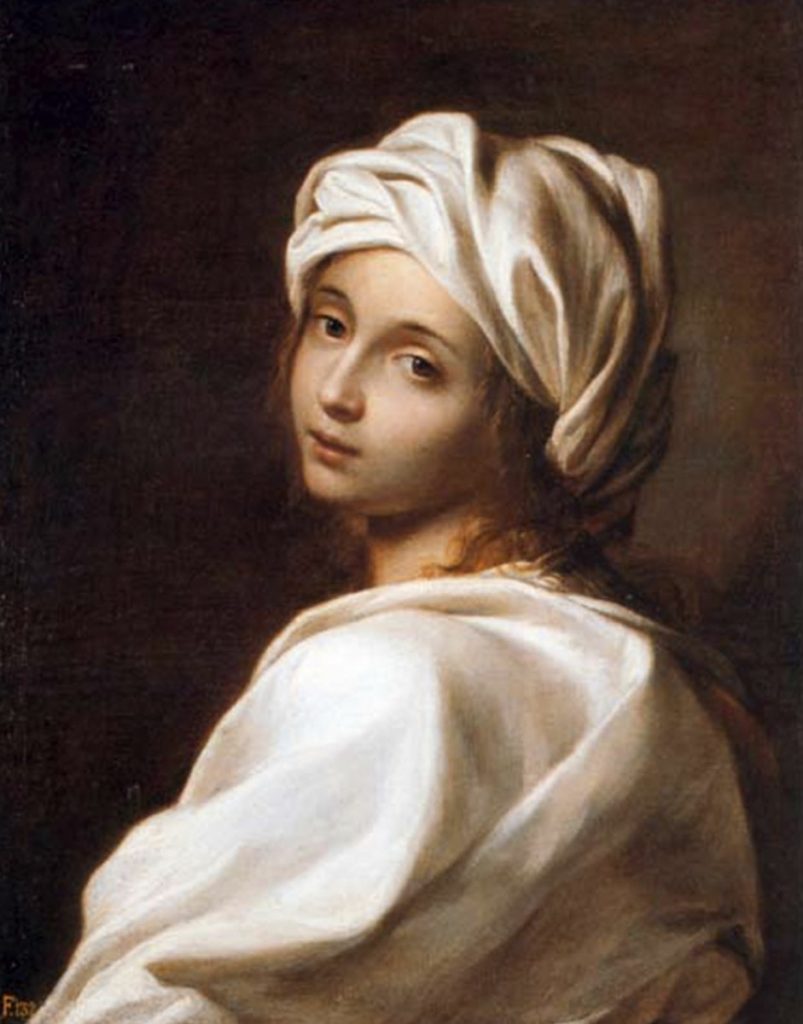
Though the painting is not very well preserved, I fell for Baroque painter Artemisia Gentileschi and her beautiful Self Portrait. I had just listened to an Art Curious podcast about her famous painting Judith Beheading Holofernes, which is in the Uffizi Gallery in Florence.
She survived a rape by her tutor. After a move to Florence, she flourished and was the first woman admitted to the Accademia.
Here’s my complete guide to the Palazzo Barberini. Click here for a skip the line entrance ticket. Click here for a 2 hour guided tour of the museum or here to book a private tour.
Address: Via delle Quattro Fontane 13
10. Villa Giulia: Ancient Etruscan Gems
The Museo Nazionale Etrusco di Villa Giuli, housed in the Villa Giulia, is true Rome hidden gem. It’s just a short stroll from the Borghese Gallery, so you can combine the two museums.
The villa was built by Pope Julius III as a pleasure pad escape. Several architects were involved, with Michelangelo lending design advice. The villa was a wonder of the 16th century.
If you have a passion for ancient Rome or the Etruscans, who lived around 600 B.C., this museum is definitely for you. The collection is the greatest of its type in the world.
Highlights include exquisite pieces of gold jewelry, the sarcophagus of the spouses (identical to the one in the Louvre), and the Pyrgi Tablets. There’s a reconstructed Etruscan temple in the villa gardens.
Click here to book a ticket. You may also want to book a guided tour.
Address: Via di Villa Giulia 9
11. Palazzo della Cancellaria: Bramante Courtyard & Vasari Frescos
The Palazzo della Cancelleria was built in 1483 by Cardinal Raffaele Riaro, a nephew of Pope Sixtus IV. The Vatican acquired the palace in 1516 and it served later as the papal seat of government.
The dramatic palace was intended to herald the restart of the cultural supremacy of Rome after the Western Schism (when the pope moved to Avignon).
The architects were likely Andrea Bregno and Donato Bramante. The main facade, a Renaissance masterpiece, is made of travertine.
It’s said that the 44 granite columns were taken from the Theatre of Pompeii and that marble was stripped from the Colosseum for general building purposes.
The courtyard is the picture of Renaissance harmony. It features open double loggias, designed by Bramante. There’s a closed second story with pilasters.
The piano nobile (principal reception floor) is distinguished by its rich carvings and a profusion of roses (Riario’s coat of arms comprises a single wild rose).
The decor proclaims the cardinal’s rank, power, and prestige. Flavian reliefs from the palace, discovered in the 1930s, are in the Vatican Museums.
The highlight inside is the Hall of the Hundred Days. Florentine painter Giorgio Vasari painted the courtroom on commission from Cardinal Farnese in 100 days. In the 1980s, the remains of a basilica from the 4th Century were found in the courtyard.
Address: Piazza della Cancelleria, 1
12. Palazzo Silvestri-Rivaldi
The Palazzo Silvestri-Rivalidi is a previously abandoned and forgotten 16th century Renaissance palace near the Colosseum. It’s beeb renovated to the tune of € 40 million. Initial restoration work began around 2004 and it recently try opened to the public.
Built in the 16th century, restorers are currently scraping gray paint off the walls to reveal brightly colored mythological frescoes from the school of Raphael. They are tentatively attributed to Raphael pupil, Perin del Vaga, who also painted frescos in Castle Sant’Angelo.
The palace is the home of the famous Torlonia Marbles, from the collection of Italian prince Alessandro Torlonia. The sculptures (called marbles) are the last great private collection of classical sculpture.
They consist of 620 works — Greek and Roman statues, busts, vases, sarcophagi, and reliefs dating from the 5th century B.C. to the 4th century A.D. Right now, they’re on display in the Villa Caffarelli until June 2021.
I hope you’ve enjoyed my guide to Rome’s palace museums. You may enjoy these other Rome travel guides and resources:
- 8 ways to spend 1 day in Rome
- 3 day itinerary for Rome
- 5 day itinerary for Rome
- Hidden gems in Rome
- Best museums in Rome
- Archaeological sites in Rome
- Guide to the Borghese Gallery
- Guide to Palatine Hill
- Guide to the Roman Forum
- Guide to the Colosseum
- Walking tour of central Rome
If you’d like to visit Rome’s secret palace museums, pin it for later.
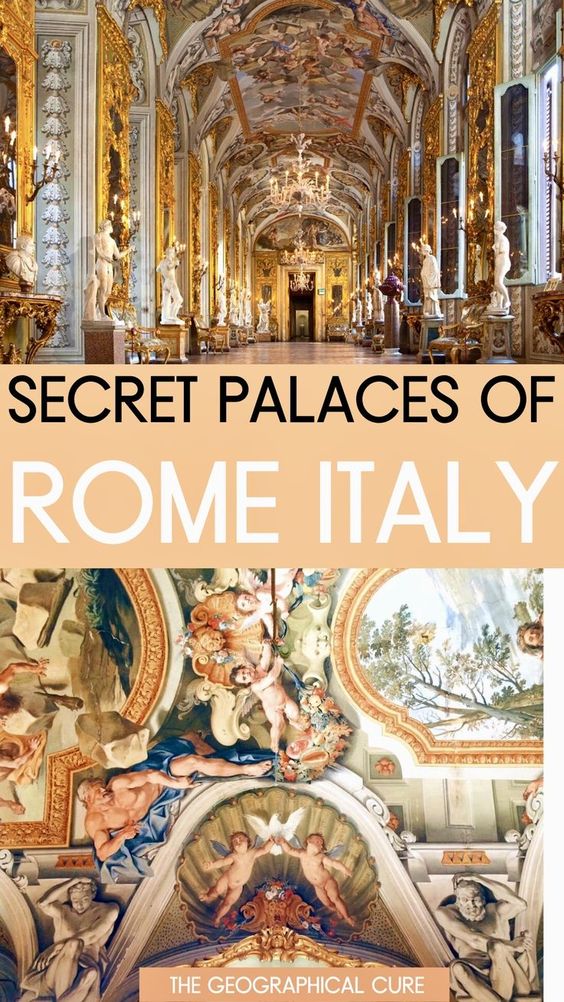

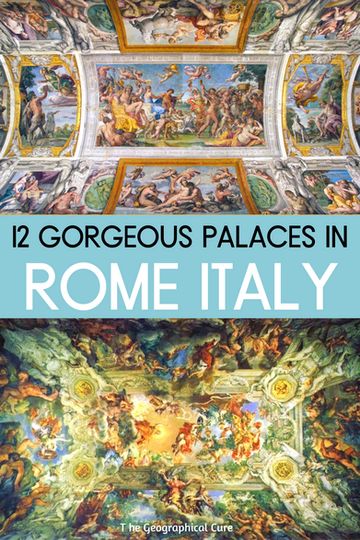
Wonderful. I am an artist from India and have visited Rome twice. Now I am visiting again for 10 days. All of your articles are very informative, well written and illustrated. Many thanks.
Shared Sovani.
Thank you so much Sharad! I hope you have a fantastic trip.